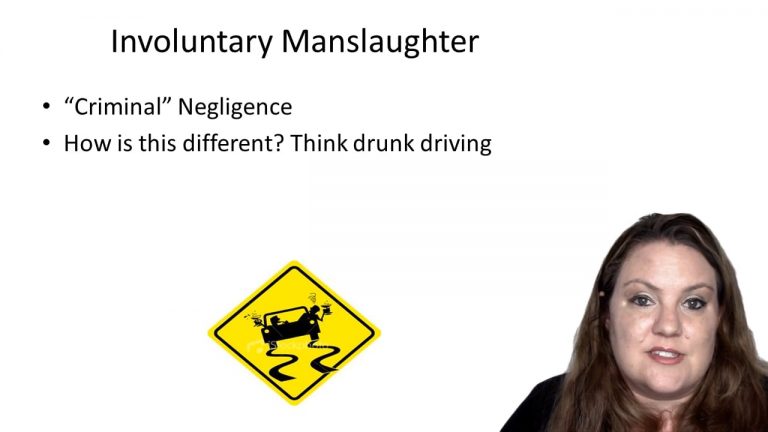SmartBrief
Confirm favorite deletion?
Criminal Law Keyed to Kennedy
The People of the State of Colorado v. Nathan Hall
Citation:
999 P.2d 207 (2000)Facts
On April 20, 1997, the last day of the ski season, the defendant worked as a ski lift operator on Vail mountain. When he finished his shift and after the lifts closed, the defendant skied down toward the base of the mountain. The slopes were not crowded. On the lower part of a run, the defendant was skiing very fast, ski tips in the air, his weight back on his skis, with his arms out to his sides to maintain balance. He flew off of a knoll and saw people below him, but he was unable to stop or gain control because of the moguls.
The defendant then collided with Cobb, who had been traversing the slope below the defendant. The collision caused major head and brain injuries to Cobb, killing him. The defendant’s blood alcohol level was .009, which is less than the limit for driving while ability impaired. A test of the defendant’s blood for illegal drugs was negative. He was charged with reckless manslaughter.
The county court held a preliminary hearing to determine whether there was probable cause to support the charges. At the preliminary hearing, the government presented testimony from witnesses, the coroner, an investigator from the District Attorney’s office, and the detective who investigated the accident for the Eagle County Sheriff’s department.
A witness testified that the defendant passed him skiing “at a fairly high rate of speed.” He estimated that Hall was skiing about three times as fast as he was. He stated that the defendant “bounded off the bumps as he went,” and “the terrain was controlling [him]” rather than the other way around. In his opinion, the defendant was skiing too fast for the skill level he demonstrated, and the defendant was out of control “if you define ‘out of control’ as [not] being able to stop or avoid someone.”
Detective McWilliam investigated the collision for the Eagle County Sheriff’s office. McWilliam testified that Deputy Mossness said that while the defendant could not remember the collision, the defendant admitted that as he flew off a knoll and looked down, he saw people below him but could not stop because of the bumps. McWilliam also testified that he interviewed an eyewitness to the collision who stated that he saw the defendant skiing straight down the slope at a high speed and out of control. He said that Cobb, who appeared to be an inexperienced skier, traversed the slope below the defendant when the defendant hit some bumps, became airborne, and struck Cobb.
Upon cross-examination, McWilliam testified that in eleven years’ experience in Eagle County, he was aware of two other collisions between skiers on Vail mountain that resulted in the death of a skier. McWilliam said that deaths on Vail mountain from such collisions are rare.
The county court dismissed the charges and held that there was no probable cause to to find that the defendant acted recklessly. The district court affirmed.
Only StudyBuddy Pro offers the complete Case Brief Anatomy*
Access the most important case brief elements for optimal case understanding.
*Case Brief Anatomy includes: Brief Prologue, Complete Case Brief, Brief Epilogue
- The Brief Prologue provides necessary case brief introductory information and includes:
Topic:
Identifies the topic of law and where this case fits within your course outline.Parties:
Identifies the cast of characters involved in the case.Procedural Posture & History:
Shares the case history with how lower courts have ruled on the matter.Case Key Terms, Acts, Doctrines, etc.:
A case specific Legal Term Dictionary.Case Doctrines, Acts, Statutes, Amendments and Treatises:
Identifies and Defines Legal Authority used in this case.
- The Case Brief is the complete case summarized and authored in the traditional Law School I.R.A.C. format. The Pro case brief includes:
Brief Facts:
A Synopsis of the Facts of the case.Rule of Law:
Identifies the Legal Principle the Court used in deciding the case.Facts:
What are the factual circumstances that gave rise to the civil or criminal case? What is the relationship of the Parties that are involved in the case.Issue(s):
Lists the Questions of Law that are raised by the Facts of the case.Holding:
Shares the Court's answer to the legal questions raised in the issue.Concurring / Dissenting Opinions:
Includes valuable concurring or dissenting opinions and their key points.Reasoning and Analysis:
Identifies the chain of argument(s) which led the judges to rule as they did.
- The Brief Prologue closes the case brief with important forward-looking discussion and includes:
Policy:
Identifies the Policy if any that has been established by the case.Court Direction:
Shares where the Court went from here for this case.

 13m 29s
13m 29s